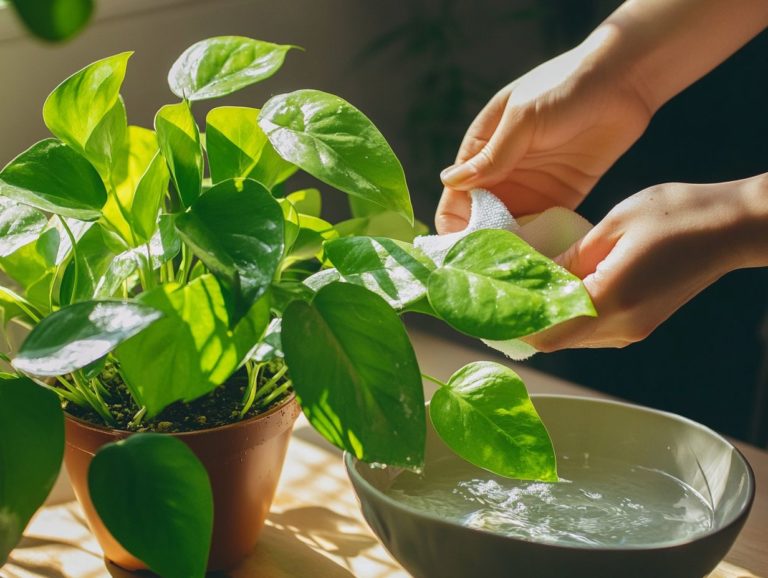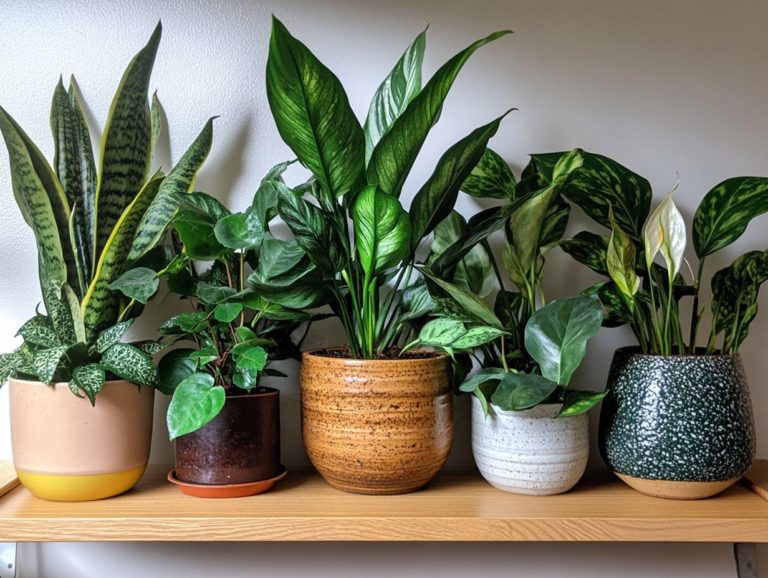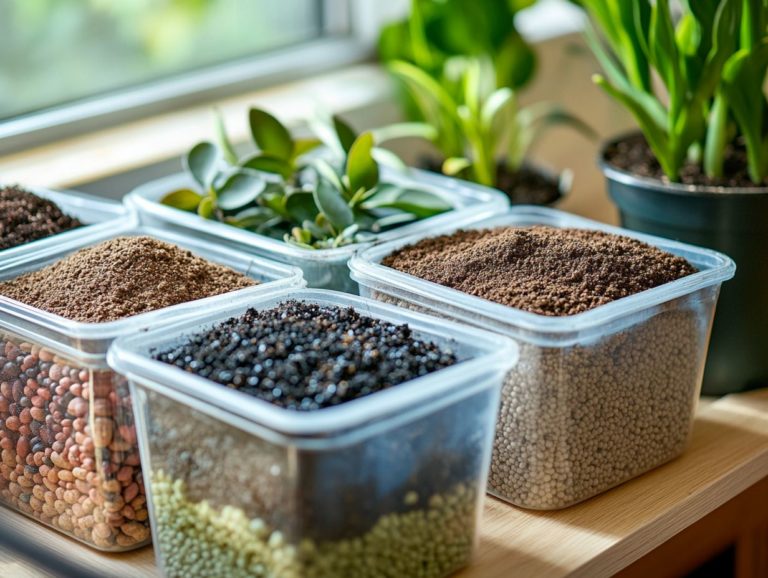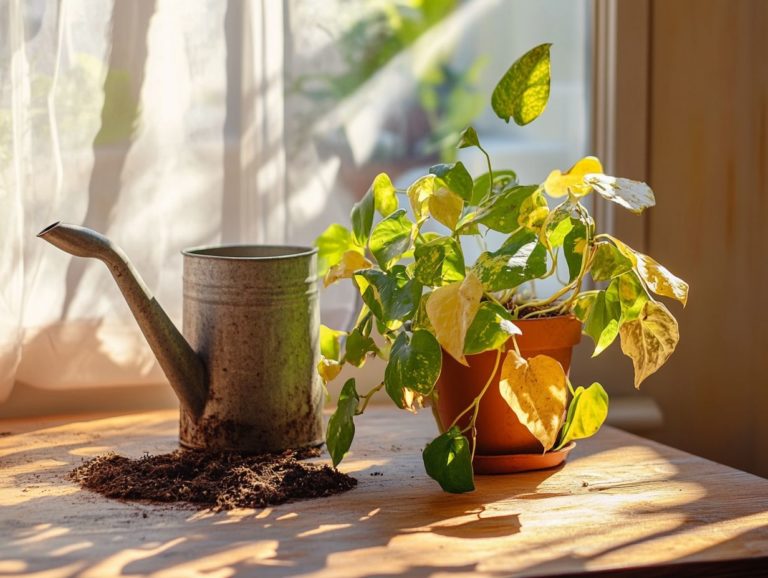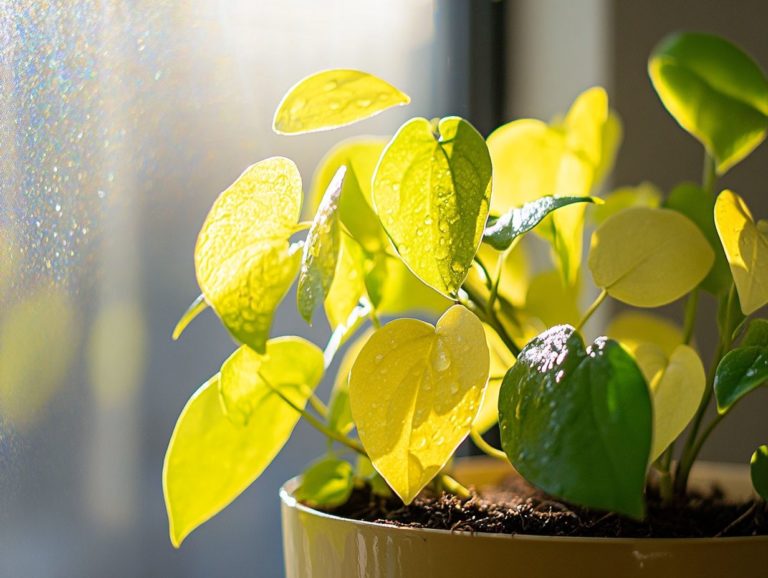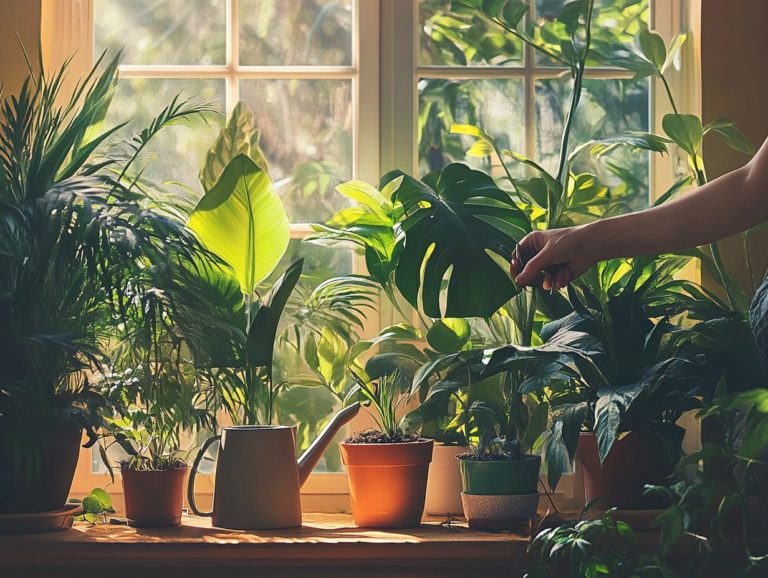How Do I Know if My Plant Needs Repotting?
Repotting is an essential aspect of plant care that often slips under the radar. Yet, it plays a vital role in promoting healthy growth!
Understanding when and why your plants need repotting can significantly enhance their vitality. This guide will illuminate the signs that indicate it s time for a new pot and offer a clear, step-by-step repotting process. You’ll also find guidance on selecting the right pot and soil tailored to your specific plants’ needs.
This guide addresses common challenges that may arise during the repotting process, ensuring your plants flourish in their new surroundings. Dive in and discover how to nurture your leafy companions with confidence and care!
Contents
- Key Takeaways:
- Understanding Plant Growth and Repotting
- Signs that Your Plant Needs Repotting
- How to Repot Your Plant
- Choosing the Right Pot and Soil
- Troubleshooting Common Repotting Issues
- Frequently Asked Questions
- How Do I Know if My Plant Needs Repotting?
- What are some signs that my plant needs repotting?
- How often should I repot my houseplants?
- Can I repot my plant in the same pot, or do I need a new container?
- How do I properly repot my plant for optimal growth?
- What should I do if my plant is too big for me to repot or care for?
Key Takeaways:
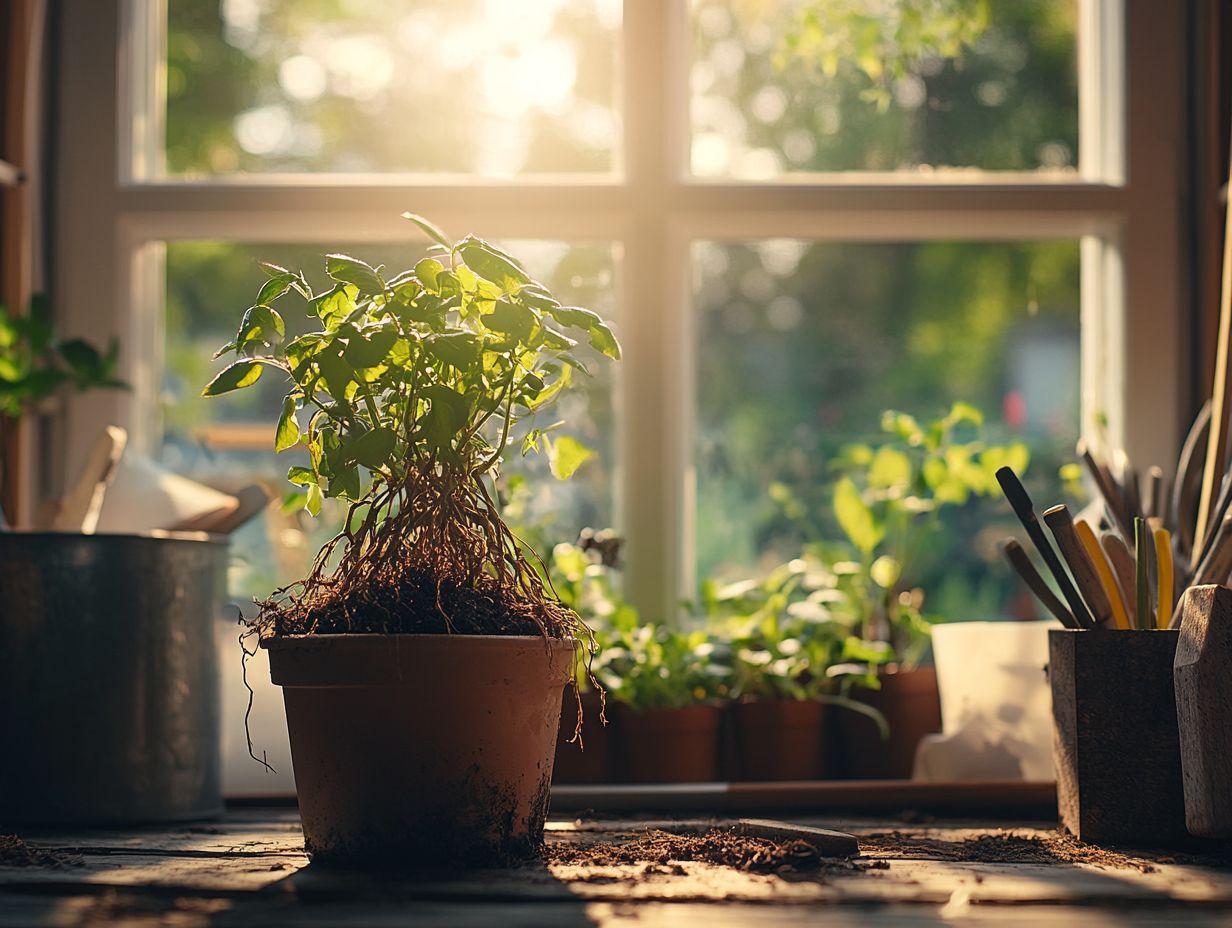
- Look out for visual cues such as roots growing out of drainage holes or water not absorbing properly as signs that your plant needs repotting.
- Repotting your plant can help promote healthy growth and prevent roots from being crowded, so it’s important to understand when and how to do it.
- When repotting, choose the right pot and soil for your plant’s needs, and take steps to prevent shock from moving to a new pot to ensure a successful repotting process.
Understanding Plant Growth and Repotting
Understanding the nuances of plant growth and the repotting process is crucial for you as a gardener, particularly if you’re tending to houseplants like the Fiddle Leaf Fig or Snake Plant.
Repotting offers more than just a larger space for roots to flourish; it ensures your plants receive the essential nutrients and moisture from an appropriate potting mix. As your plants thrive, they might become crowded or top-heavy, signaling the need for a new container and fresh soil to support their continued healthy growth.
Why and When Plants Need Repotting
Plants signal their need for repotting when they become crowded, which means their roots have surpassed the confines of their current pot size. This restriction limits their access to essential soil nutrients and moisture crucial for thriving.
You might notice common indicators of this issue, such as yellowing leaves, which often suggest the plant is not receiving the nutrients it craves. Compacted soil that holds onto moisture more than it should is another telltale sign. If your plant is in a container that feels unusually heavy or has roots pushing through the drainage holes, it s time for a change. Spring is the ideal time to undertake this important task, offering optimal conditions for healthy growth and recovery, allowing your plant to transition smoothly into its new, spacious home.
Signs that Your Plant Needs Repotting
Recognizing the signs that your plant needs repotting is essential for preserving its health and vitality. Ignoring these signals can result in serious issues, such as root rot or stunted growth, which can compromise the overall well-being of your cherished houseplants.
Visual Cues and Plant Behavior
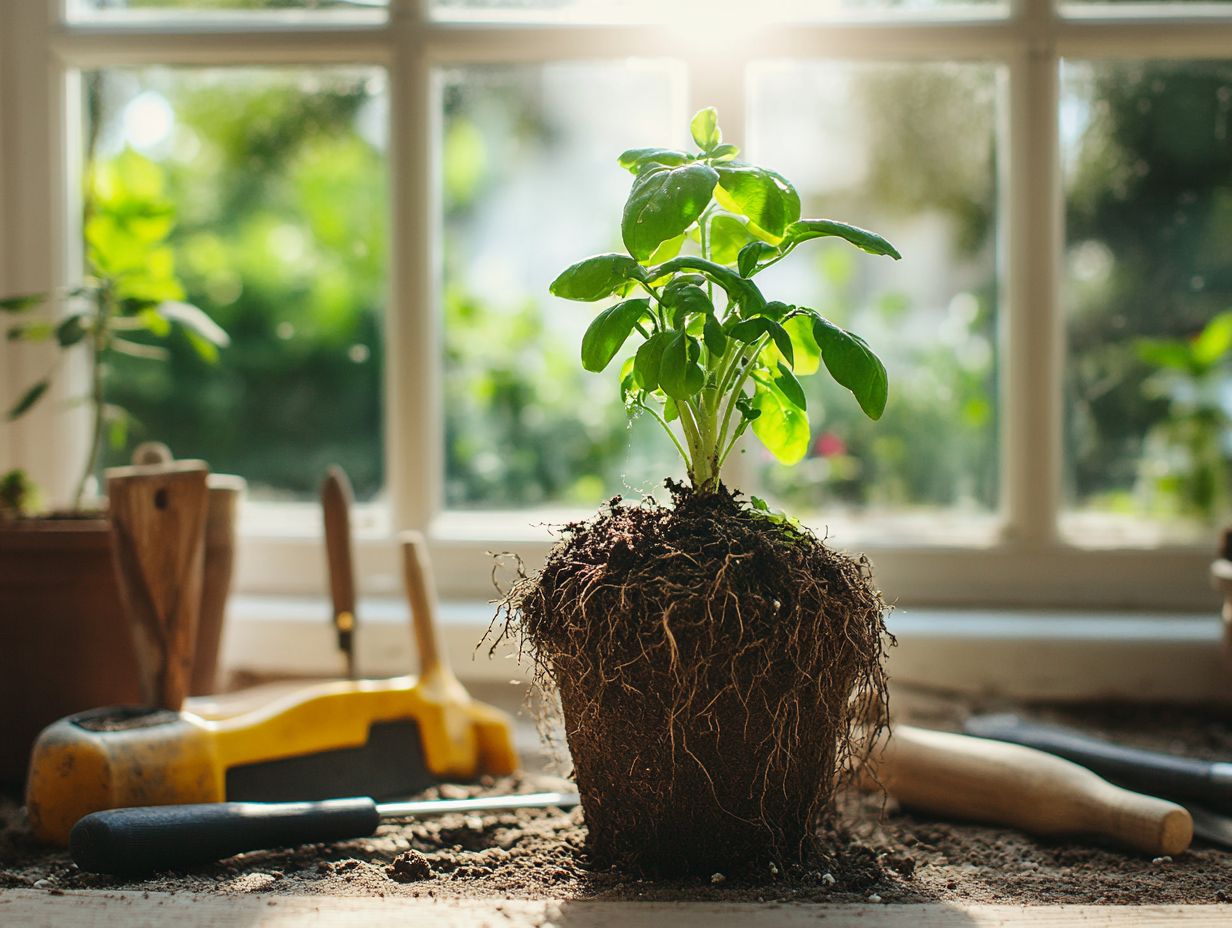
Visual cues and changes in your plant’s behavior, like wilting leaves or sluggish growth, often signal that it s feeling stressed due to being crowded or lacking essential nutrients.
As you observe your houseplant, pay special attention to yellowing leaves; they can be quite alarming and may indicate overwatering or nutrient deficiencies. In such cases, a careful approach to pruning may help revive your plant. If the foliage looks droopy or shriveled, it s likely reacting to inadequate water supply or poor drainage. Such signs can jeopardize the overall health of your plant, so it’s essential to regularly check for these symptoms.
By maintaining a balanced watering routine and addressing its nutrient needs, along with suitable soil and pot size, you can help restore your plant’s vitality and resilience, allowing it to thrive beautifully once again.
How to Repot Your Plant
Repotting your plant is an elegant endeavor that entails delicately transferring it into a larger container brimming with fresh potting mix. Utilizing high-quality soil from brands like FoxFarm or G&B Organics ensures your plants get the necessary nutrients, creating an ideal environment for your plant to thrive.
Are you ready to give your plants the care they deserve? Start repotting your plants today and watch them thrive!
Step-by-Step Guide
To successfully repot your plant, begin by selecting a container that is one size larger than its current pot. Good drainage is a must! It helps avoid problems like too much water in the soil, which can lead to root rot. Prepare your potting mix, which is the soil used for potted plants, to promote optimal soil health. This first step establishes a nurturing environment for the plant’s roots.
Once you’ve chosen the right container, gently ease the plant from its current home, being mindful to minimize stress and injury to the roots. As you handle the root ball, inspect it for any signs of root rot or damage, and trim away any unhealthy sections with sterile scissors.
With the roots ready, place the plant into the new pot, filling in around the edges with your carefully prepared potting mix. After repotting, watering becomes essential. It encourages the soil to settle, eliminates air pockets, and provides the necessary hydration for your plant to acclimate to its new surroundings.
Keep in mind that maintaining adequate moisture while avoiding overwatering is vital for your plant’s successful adaptation.
Choosing the Right Pot and Soil
Selecting the right pot and soil is essential for the success of your houseplant collection. This combination plays a crucial role in drainage, root health, and the overall growth of your plants.
Making informed choices here sets the foundation for a thriving indoor garden.
Factors to Consider
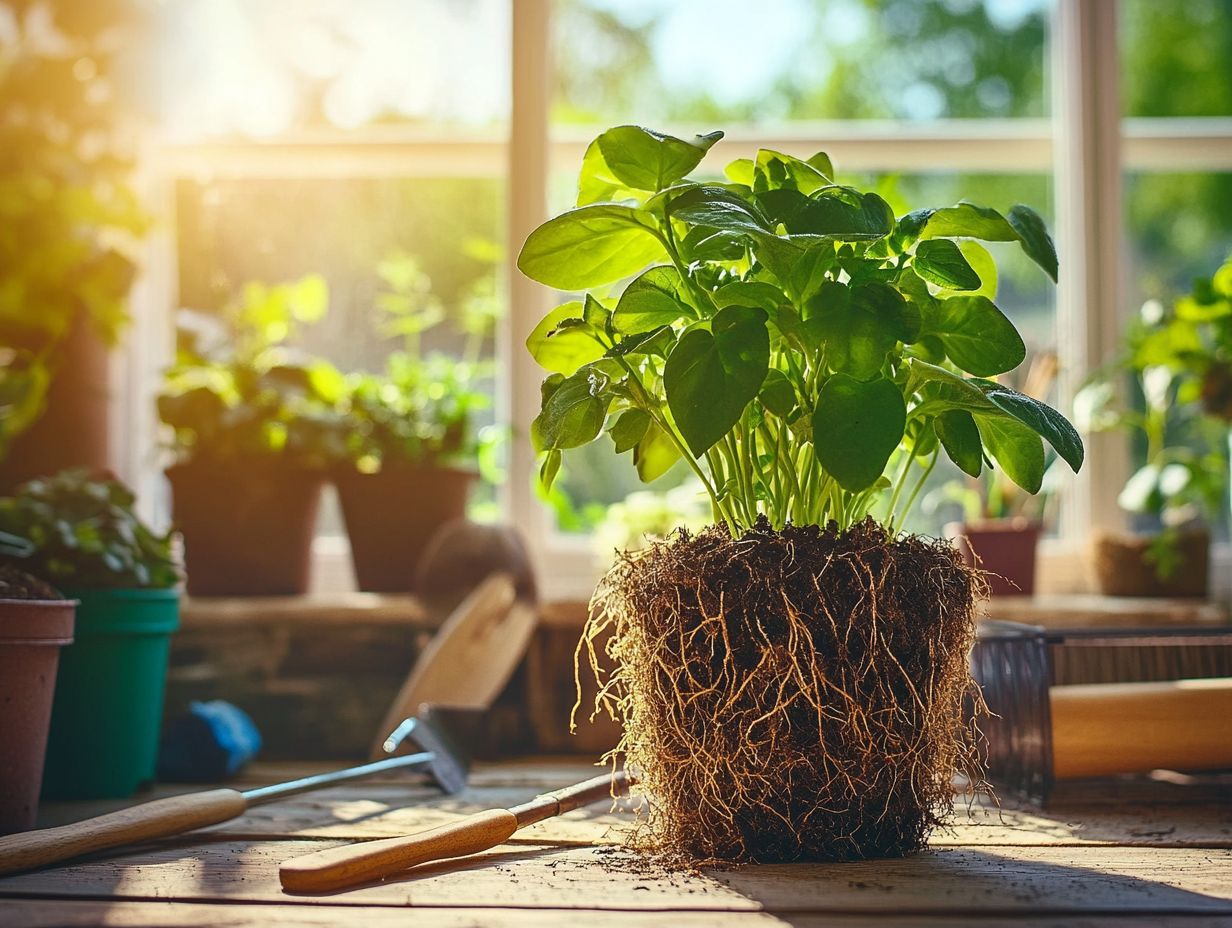
When selecting a pot and soil for your plants, think carefully about container size, drainage options, and the composition of your potting mix. These elements play a crucial role in nutrient availability and moisture retention.
A well-balanced potting mix often features a blend of organic materials, like G&B Organics or Malibu Compost. Not only do these enhance soil structure, but they also nurture beneficial microorganisms, creating a thriving environment for your plant roots and significantly boosting overall health.
Don’t overlook the importance of proper drainage. Ensure your pots have ample holes at the bottom to prevent too much water in the soil, which can lead to pesky root rot.
Evaluate the environmental conditions such as humidity and light exposure. Understanding how these factors affect your houseplants is essential for making the best choices in gardening.
Troubleshooting Common Repotting Issues
Troubleshooting common issues that may arise during repotting is crucial for ensuring your plants transition smoothly to their new environment.
By addressing these challenges, you promote not only their health but also their longevity, allowing your greenery to thrive in its new home. Using proper gardening tips can further support this endeavor.
Dealing with Root Bound Plants
Dealing with root-bound plants calls for a keen eye and thoughtful approach to their root system. You may need to repot them into a larger container and possibly prune some roots to encourage healthy growth.
To start identifying if your plant is root-bound, gently remove it from its pot and look at the roots. If you notice they are tightly coiled around the edges or forming a dense mass, it’s time to take action and consider pruning the roots for better growth. Additionally, understanding when to repot indoor plants can greatly improve their overall health.
When you do this, make sure the soil is moist but not overly wet; this helps protect those delicate roots from unnecessary damage. A good potting mix can assist in achieving the right moisture balance.
After you’ve removed the plant, grab some clean, sharp pruning shears and trim any excessively long or damaged roots, ensuring you maintain a healthy balance.
It s also crucial to refresh the potting mix with nutrient-rich soil, providing your plant with the minerals it needs for rejuvenation. This will facilitate robust growth in its new environment, setting the stage for a thriving plant that can withstand root rot.
Preventing Shock and Transplant Stress
Preventing shock and transplant stress is vital for your plant’s health after repotting. Use proper watering techniques and acclimate your plant to its new environment.
Taking time to prepare your plant for its new home significantly impacts its recovery. One effective method is gradual acclimatization. This means slowly introducing your plant to new temperature and light conditions over several days.
Optimal watering techniques are essential for your plant’s health. Keep the soil adequately moist without letting it become waterlogged. Initially, placing your plant in a shaded area can also help by shielding it from harsh sunlight during this transition.
By following these tips, you can help your plants adjust. Ensure they have enough water and nutrients for thriving growth.
Frequently Asked Questions
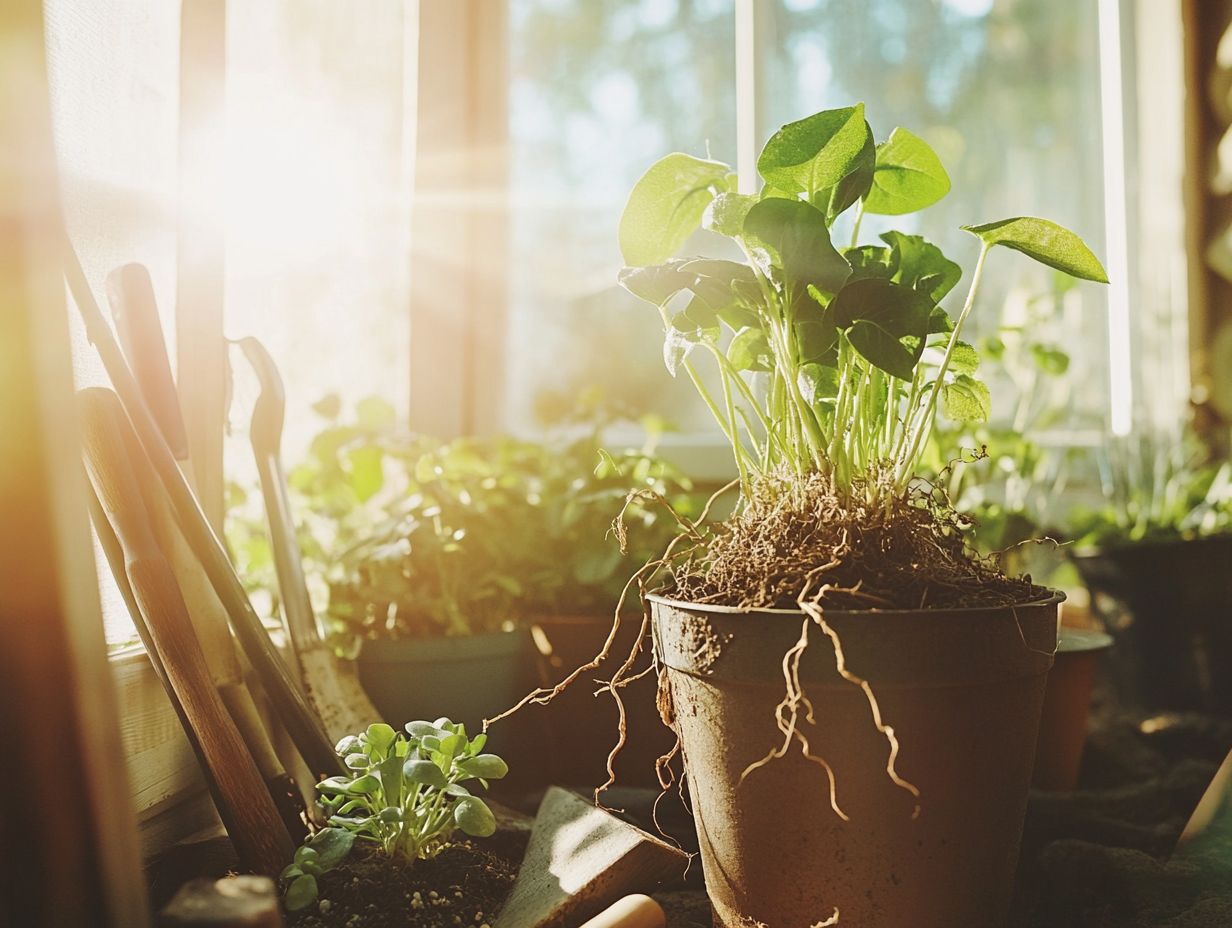
How Do I Know if My Plant Needs Repotting?
Check the roots! If they are cramped and circling the pot, it’s time for an upgrade.
What are some signs that my plant needs repotting?
Some signs include stunted growth, yellowing leaves, and water draining too quickly. These could mean the plant has outgrown its container and needs more space.
How often should I repot my houseplants?
This varies by plant type and growth rate. Some need repotting every year, while others can go several years. Regularly check the roots and overall health to determine the best time.
Can I repot my plant in the same pot, or do I need a new container?
It’s best to use a larger pot for more growth. However, if the plant is slightly root-bound, you can prune the roots and repot it in the same pot with fresh potting mix.
How do I properly repot my plant for optimal growth?
To repot, gently remove the plant from its pot and loosen the roots. Place it in a larger pot with fresh soil, covering the roots completely. Ensure adequate moisture and water thoroughly after transplanting.
What should I do if my plant is too big for me to repot or care for?
If your plant is too large to repot alone, seek help from a gardener or a friend. Another option is to divide the plant into smaller sections and repot each in a separate pot with suitable soil for healthy growth.

